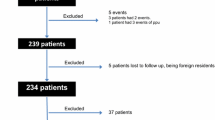Abstract
After increasing steeply at the beginning of the twentieth century, ulcer perforation incidence during the last decades has declined in the young and in men, and it has risen among the elderly and in women. These changes can be attributed to a cohort phenomenon: Ulcer perforation risk is particularly common in the cohorts born after the turn of the twentieth century and is less common in previous and succeeding birth cohorts. A decline in total incidence is expected with the death of the high risk cohorts. Most ulcer perforations among subjects < 75 years of age can be attributed to smoking. Subjects with a history of ulcer perforation therefore have poorer long-term survival than the general population, most pronounced for younger generations. About one of four ulcer perforations can be attributed to the use of nonsteroidal antiinflammatory drugs, a risk factor of particular importance in the elderly. Ulcer perforation was frequently treated by gastric resection in former days, whereas suture, being the first method introduced in 1887, is the method of choice today. The introduction of antibiotics improved the prognosis of ulcer perforation surgery greatly. Postoperative lethality decreased until 1950 but has remained stable since then. Lethality is higher in the elderly and is higher after gastric than after duodenal perforation. The delay before surgical treatment is a strong determinant for lethality, complication rates, and hospital costs. Treatment delay seems to have increased during the last few decades and is higher among women and the elderly. The prognosis of ulcer perforation is poorer in women owing to longer treatment delay.
Similar content being viewed by others
Author information
Authors and Affiliations
Rights and permissions
About this article
Cite this article
Svanes, C. Trends in Perforated Peptic Ulcer: Incidence, Etiology, Treatment, and Prognosis. World J. Surg. 24, 277–283 (2000). https://doi.org/10.1007/s002689910045
Published:
Issue Date:
DOI: https://doi.org/10.1007/s002689910045




